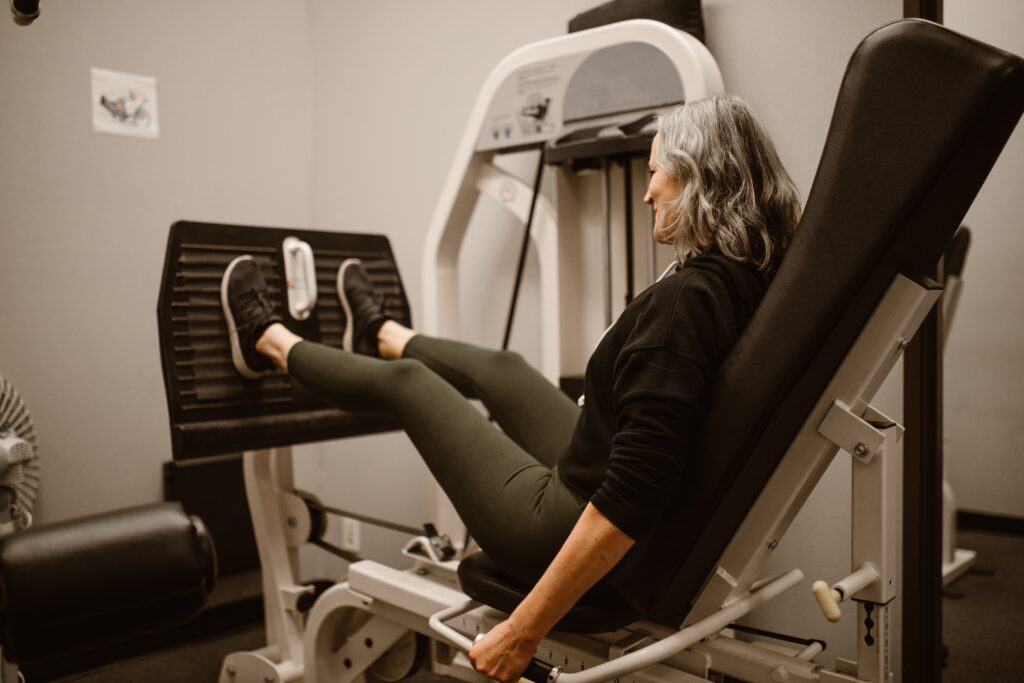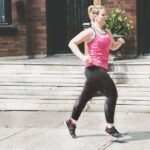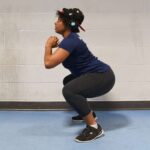Starting a gym workout plan as a beginner is a pivotal step toward achieving your fitness goals. Whether you aim to build muscle mass or shed excess weight, a well-structured gym routine tailored to your objectives can accelerate your progress and enhance your overall health and fitness.
In this guide, we’ll focus on gym workout routines for muscle gain. By understanding the principles and strategies behind this approach, beginners can embark on their fitness journey with confidence and purpose.
Gym Workout Routine for Muscle Gain for Beginners
Building muscle mass requires a targeted approach that emphasizes resistance training, proper nutrition, and adequate recovery. Here’s a breakdown of a beginner-friendly gym workout routine designed to promote muscle growth:
Resistance Training
Focus on compound exercises that engage multiple muscle groups simultaneously, such as squats, deadlifts, bench presses, overhead presses, and rows.
Start with 3-4 sets of 8-12 repetitions for each exercise, using a weight that challenges your muscles while maintaining proper form.
Incorporate both free weights and machine exercises to target different muscle fibers and promote balanced development.
Progressive Overload
Gradually increase the weight or resistance you lift as your strength improves, aiming for incremental progress over time.
Keep track of your workouts and strive to surpass previous performance by adding more weight, increasing repetitions, or reducing rest periods between sets.
Split Training
Consider dividing your workouts into specific muscle groups to allow for adequate rest and recovery between sessions.
Example split routines include:
- Day 1: Chest and triceps
- Day 2: Back and biceps
- Day 3: Legs and shoulders
Incorporate core exercises throughout the week or dedicate a separate day to core work.
Nutrition
Consume a balanced diet rich in lean protein, complex carbohydrates, healthy fats, and plenty of fruits and vegetables.
Aim to consume protein sources such as chicken, fish, eggs, dairy, tofu, and legumes to support muscle repair and growth.
Stay hydrated by drinking plenty of water throughout the day, especially before and after workouts.
Rest and Recovery
Allow sufficient time for rest and recovery between workouts to prevent overtraining and promote muscle repair.
Aim for at least 48 hours of rest between training sessions targeting the same muscle groups.
Prioritize quality sleep to optimize recovery and muscle growth.
Example of a 3-day gym workout plan for beginners
Here’s a beginner-friendly three-day gym routine designed specifically for muscle building:
Day 1: Upper Body

Bench press: gym workout plan for beginners
1. Warm-Up (10 minutes)
- 5 minutes of light cardio (jogging, cycling, or elliptical)
- Dynamic stretches: arm circles, shoulder rolls, torso twists
2. Upper Body Strength Training
- Bench Press: 3 sets x 8-10 reps
- Bent-Over Rows: 3 sets x 8-10 reps
- Dumbbell Shoulder Press: 3 sets x 10-12 reps
- Lat Pulldowns or Assisted Pull-Ups: 3 sets x 8-10 reps
3. Core Work
- Plank: Hold for 30-60 seconds (3 sets)
- Russian Twists: 3 sets x 15-20 reps
4. Cool Down and Stretching (5-10 minutes)
- Perform static stretches targeting the chest, back, shoulders, arms, and core.
Day 2: Lower Body

Leg press: gym workout plan for beginners
1. Warm-Up (10 minutes)
- 5 minutes of light cardio (jogging, cycling, or elliptical)
- Dynamic stretches: leg swings, walking lunges, hip circles
2. Lower Body Strength Training
- Squats: 3 sets x 8-10 reps
- Romanian Deadlifts: 3 sets x 8-10 reps
- Leg Press: 3 sets x 10-12 reps
- Lunges (with or without weights): 3 sets x 10-12 reps each leg
3. Core Work
- Plank Variations (Side Planks, Plank with Leg Lifts): 3 sets x 30-45 seconds
- Bicycle Crunches: 3 sets x 15-20 reps
4. Cool Down and Stretching (5-10 minutes)
- Perform static stretches targeting the quadriceps, hamstrings, glutes, and calves.
Day 3: Rest or Active Recovery
- Rest Day Option: Take a complete rest day to allow your muscles to recover and grow.
- Active Recovery Option: Engage in low-impact activities such as walking, pilates for beginners, or yoga to promote circulation, flexibility, and muscle recovery.
Tips for Beginners at the Gym
Prioritize proper form and technique over lifting heavy weights. Focus on controlled movements and full range of motion to maximize muscle engagement and prevent injury.
Start with lighter weights to master proper form, then gradually increase the resistance as you become more comfortable with the exercises.
Rest for 60-90 seconds between sets to allow for adequate recovery without compromising intensity.
Stay hydrated throughout your gym workout plan and consume a balanced diet rich in protein, carbohydrates, and healthy fats to support muscle growth and recovery.
Listen to your body and adjust the intensity and volume of your workouts based on your individual fitness level and recovery capacity.
Incorporate adequate rest and recovery days into your gym workout plan to prevent overtraining and promote optimal muscle repair and growth.
This three-day gym routine for beginners provides a structured approach to muscle building, targeting major muscle groups with compound exercises while incorporating core work for stability and strength.
As you progress, you can gradually increase the intensity, volume, and variety of exercises to continue challenging your muscles and stimulating growth.
FAQ – Gym Workout Plan for Beginners
How many hours should a beginner gym?
The number of hours a beginner should spend at the gym depends on various factors, including individual fitness goals, current fitness level, and personal schedule. However, for most beginners, aiming for 3 to 5 hours of gym time per week is a good starting point.
Here’s a breakdown:
1. Frequency: Beginners should aim to go to the gym at least 3 to 5 times per week. This frequency allows for consistency and helps establish a routine conducive to progress.
2. Duration: Each gym session for beginners can typically range from 45 minutes to 1 hour. This timeframe allows for an effective workout without overexertion or burnout.
3. Intensity: It’s essential for beginners to focus on quality rather than quantity. Instead of spending excessive hours at the gym, prioritize intensity during your workouts. Incorporate both cardiovascular exercise and strength training sessions within your weekly routine to achieve a balanced fitness regimen.
Is 3 days a week gym enough for beginners?
Yes, exercising at the gym 3 days a week can be sufficient for beginners, especially when starting out. The key to progress lies in the quality and consistency of your workouts rather than the quantity of days spent at the gym.
What should beginners eat before gym?
Before heading to the gym, beginners should consume a balanced meal or snack that provides sustained energy, supports hydration, and aids in muscle recovery. Here are some recommendations for what beginners should eat before going to the gym:
Complex Carbohydrates: Opt for foods that are rich in complex carbohydrates, which serve as the body’s primary source of energy during exercise. Good options include whole grains like oats, quinoa, brown rice, or whole grain bread.
Lean Protein: Including protein in your pre-workout meal or snack can help support muscle repair and growth. Choose lean protein sources such as chicken, turkey, fish, eggs, Greek yogurt, or tofu.
Did you find this beginner gym workout plan helpful? Leave your comments below or share with your friends.



Pingback: Exercise at Home for Beginners. Starting Strong.